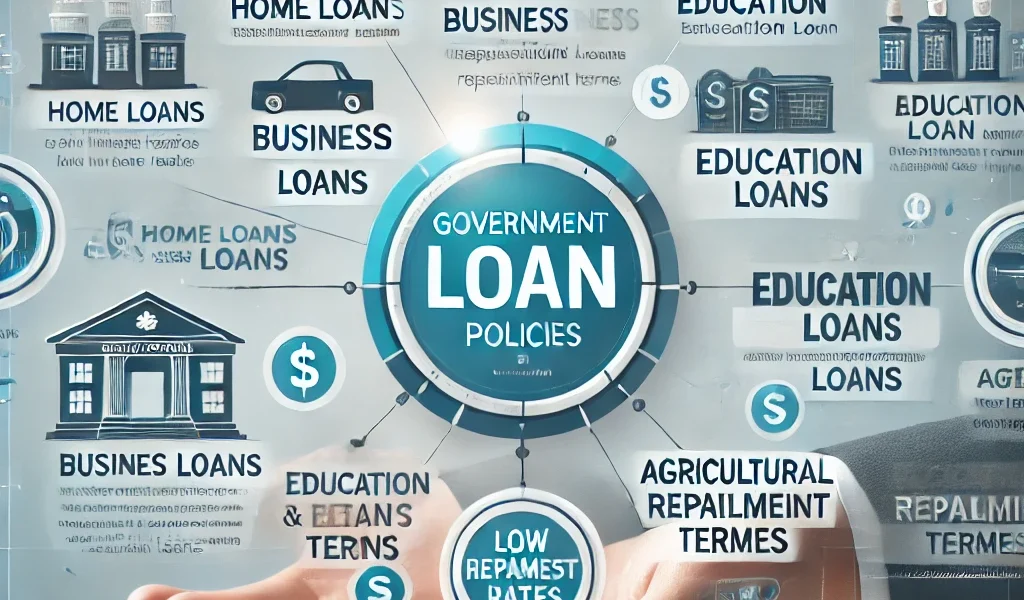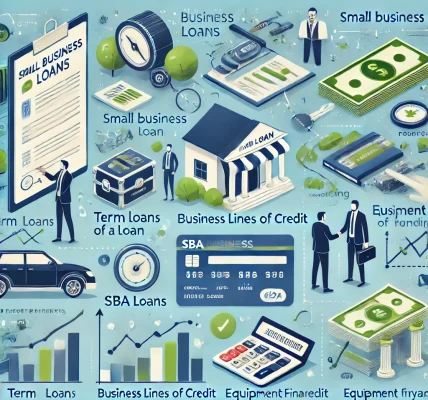Introduction
Government loan policies play a crucial role in providing financial assistance to individuals, businesses, and specific sectors of the economy. These loans often come with lower interest rates, flexible repayment terms, and special incentives to support economic growth and financial inclusion. Understanding government loan policies can help borrowers make informed decisions while leveraging financial support for various needs.
In this article, we will explore different types of government-backed loans, their benefits, eligibility criteria, application processes, and potential challenges.
Types of Government Loan Policies
1. Personal and Consumer Loans
The government provides various personal loans to support individuals, including education loans, housing loans, and emergency financial assistance.
- Education Loans: These loans help students pursue higher education by covering tuition fees, accommodation, and other expenses. Some government schemes also offer subsidies and interest waivers for economically weaker sections.
- Home Loans: Government-backed housing schemes such as FHA loans (in the U.S.) or Pradhan Mantri Awas Yojana (PMAY) in India provide affordable housing finance to low and middle-income groups.
- Emergency Loans: During crises like natural disasters or pandemics, governments often introduce emergency loans with low-interest rates to support affected individuals.
2. Business and Startup Loans
To promote entrepreneurship and business expansion, governments provide financial assistance to startups and MSMEs (Micro, Small, and Medium Enterprises).
- MSME Loans: Governments worldwide offer MSME loans to support small businesses, enabling them to grow and generate employment.
- Startup Loans: New businesses can benefit from special funding programs that offer lower interest rates and flexible repayment terms.
- Agricultural Loans: Farmers can avail government-backed agricultural loans to purchase equipment, seeds, fertilizers, and other resources.
3. Subsidized Loans for Special Sectors
Several government loan programs cater to specific sectors, including education, healthcare, renewable energy, and rural development.
- Renewable Energy Loans: These loans support the adoption of solar, wind, and other green energy solutions.
- Women Entrepreneurship Loans: Many governments offer special loan schemes for women entrepreneurs to promote financial independence and gender equality.
- Infrastructure Development Loans: Large-scale infrastructure projects receive government-backed loans to ensure economic growth.
Key Benefits of Government Loans
- Lower Interest Rates: Government-backed loans often have lower interest rates compared to private lenders.
- Flexible Repayment Terms: Many programs offer extended repayment periods, making it easier for borrowers to manage finances.
- Subsidies and Grants: Some loan schemes include interest subsidies or even partial loan forgiveness.
- Easier Accessibility: Government loan programs are designed to be inclusive, benefiting individuals with lower credit scores or limited financial resources.
- Tax Benefits: Some loans, such as home loans and education loans, come with tax deductions on interest payments.
Eligibility Criteria for Government Loans
The eligibility criteria for government-backed loans vary based on the type of loan. However, common factors include:
- Age Requirement: Applicants must meet the minimum age requirement, usually 18 years and above.
- Income Level: Some loans are targeted at low and middle-income individuals, while others require a specific income threshold.
- Credit Score: While government loans are more accessible, a reasonable credit score may still be required for approval.
- Employment or Business Stability: Proof of employment or business stability is often necessary.
- Collateral (if applicable): Some loans, such as home and business loans, may require collateral security.
How to Apply for a Government Loan
1. Research Available Loan Programs
Identify the government loan programs that best suit your needs. Visit official government websites or consult financial institutions that offer such loans.
2. Check Eligibility and Gather Documents
Ensure that you meet the eligibility criteria and gather required documents such as identity proof, income proof, bank statements, and business plans (for business loans).
3. Submit an Application
Applications can typically be submitted online through government portals or in person at designated banks and financial institutions.
4. Loan Processing and Approval
Once the application is submitted, it undergoes verification and approval processes. Government loans often have streamlined processes for faster disbursement.
5. Loan Disbursement
Upon approval, the loan amount is disbursed into the borrower’s account, or directly to the institution or vendor in cases like education or home loans.
Potential Challenges and How to Overcome Them
1. Lengthy Approval Process
Some government loans may take longer to process due to bureaucratic procedures. To overcome this, ensure that all required documents are complete and accurate at the time of application.
2. Limited Availability of Funds
Government loan programs often have a limited budget, leading to competitive selection processes. Applying early and meeting all criteria can improve approval chances.
3. Strict Compliance Requirements
Certain loan programs have specific usage restrictions, requiring borrowers to adhere to guidelines strictly. Understanding the terms and conditions before applying is essential.
4. Collateral Requirements for Some Loans
While many government loans are unsecured, some still require collateral. Borrowers should be prepared to provide security if needed or explore alternative loan schemes.
Conclusion
Government loan policies provide valuable financial support to individuals, businesses, and specialized sectors. With lower interest rates, flexible repayment terms, and subsidies, these loans help boost economic growth and financial stability. However, borrowers must understand the eligibility criteria, hidden charges, and application processes to maximize the benefits of government-backed loans. Conduct thorough research, plan finances carefully, and consult financial advisors to make the best use of these opportunities while ensuring compliance with legal and financial obligations.




